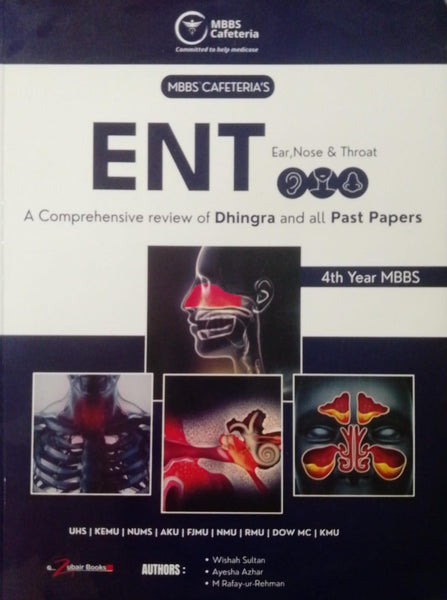Eye Case Review Chart By Ali Raza Chaudary
- Publisher: ZUBAIR BOOK DEPOT
- Availability: In Stock
- SKU: 50642
Rs.200.00
Rs.250.00
Tags: affordable prices , best books , Best Selling Books , BestBuy’s , Book Shop , Book shopping , bookshop , bookshop near me , coma assessment , coma assessment checklist , coma assessment scale , coma assessment tools , coma awareness. , coma care , coma causes , coma complications , coma diagnosis , coma education , coma evaluation , coma examination , coma follow-up , coma grading , coma guidelines , coma imaging , coma interventions , coma management , coma monitoring , coma nursing , coma outcome , coma pathophysiology , coma pharmacotherapy , coma prevention , coma prognosis , coma recovery , coma rehabilitation , coma research , coma scoring , coma stimulation , coma support , coma therapy , coma treatment , consciousness , Glasgow Coma Scale , good books , medical emergency , minimally conscious state , neurological , one stop shop , persistent vegetative state , price-friendly Comprehensive , ReasonablePrice , reduced price , secure shopping , traumatic brain injury
Ali Raza Chaudary's "Eye Case Review Chart MBBS" offers a concise yet comprehensive overview of key cases in ophthalmology, tailored for medical students pursuing their MBBS degree. This chart serves as an invaluable resource, providing a structured approach to understanding and analyzing various eye conditions commonly encountered in clinical practice. With a focus on clarity and relevance, it equips students with the essential knowledge and skills needed to navigate through complex case scenarios with confidence.
Key Points:
1. Anatomy and Physiology of the Eye: The chart begins with a detailed overview of the anatomy and physiology of the eye, covering essential structures such as the cornea, lens, retina, and optic nerve. It elucidates their functions and interconnections to lay a solid foundation for understanding pathological processes.
2. Common Eye Disorders: Major eye disorders including cataracts, glaucoma, diabetic retinopathy, and age-related macular degeneration are systematically presented, highlighting their etiology, clinical features, diagnostic criteria, and management strategies. Each disorder is discussed in a clear and concise manner to facilitate comprehension and retention.
3. Diagnostic Modalities: Various diagnostic modalities such as visual acuity testing, tonometry, slit-lamp examination, fundoscopy, and imaging techniques are elucidated, emphasizing their significance in accurate diagnosis and patient management. The chart aids students in developing proficiency in conducting these assessments and interpreting their findings.
4. Differential Diagnosis: A comprehensive list of differential diagnoses for common eye complaints is provided, accompanied by key differentiating features and diagnostic clues. This section enhances students' ability to discern between similar presentations and arrive at an accurate diagnosis through systematic clinical reasoning.
5. Treatment Approaches: Evidence-based treatment approaches for different eye conditions, including pharmacological interventions, surgical procedures, and non-invasive therapies, are outlined with emphasis on therapeutic efficacy, safety profiles, and patient preferences. The chart serves as a practical guide for formulating individualized treatment plans tailored to each patient's needs.
6. Case Studies: Illustrative case studies representing diverse clinical scenarios are incorporated throughout the chart, offering real-world insights into the application of theoretical knowledge in clinical practice. These cases challenge students to integrate information from various disciplines and develop critical thinking skills in problem-solving.
7. Clinical Pearls: Key clinical pearls and mnemonics are interspersed throughout the chart to aid in memory retention and reinforce important concepts. These succinct reminders serve as valuable learning aids, helping students recall essential information during examinations and clinical encounters.
8. Patient Education and Counseling: Strategies for effective patient education and counseling regarding eye health promotion, disease prevention, treatment compliance, and lifestyle modifications are discussed. This aspect underscores the importance of holistic patient care and empowers students to engage in meaningful doctor-patient communication.
9. Emerging Trends and Research: Emerging trends, advancements, and research developments in the field of ophthalmology are highlighted, fostering a spirit of inquiry and lifelong learning among students. By staying abreast of the latest innovations, students are better equipped to adapt to evolving clinical practices and contribute to advancements in the field.
10. Multidisciplinary Approach: The chart emphasizes the significance of a multidisciplinary approach in managing complex eye disorders, advocating for collaboration among ophthalmologists, optometrists, primary care physicians, and allied healthcare professionals. This collaborative model ensures holistic patient care and optimal treatment outcomes, underscoring the importance of interdisciplinary teamwork in healthcare delivery.
In conclusion, "Eye Case Review Chart MBBS" by Ali Raza Chaudary encapsulates essential concepts, case studies, and practical insights in ophthalmology, serving as a comprehensive learning tool for medical students embarking on their journey in the field of eye care.
════ ⋆★⋆ ════
Writer ✤ Ali Raza Chaudary
Publishers ✤ Zubair Book Depot





















